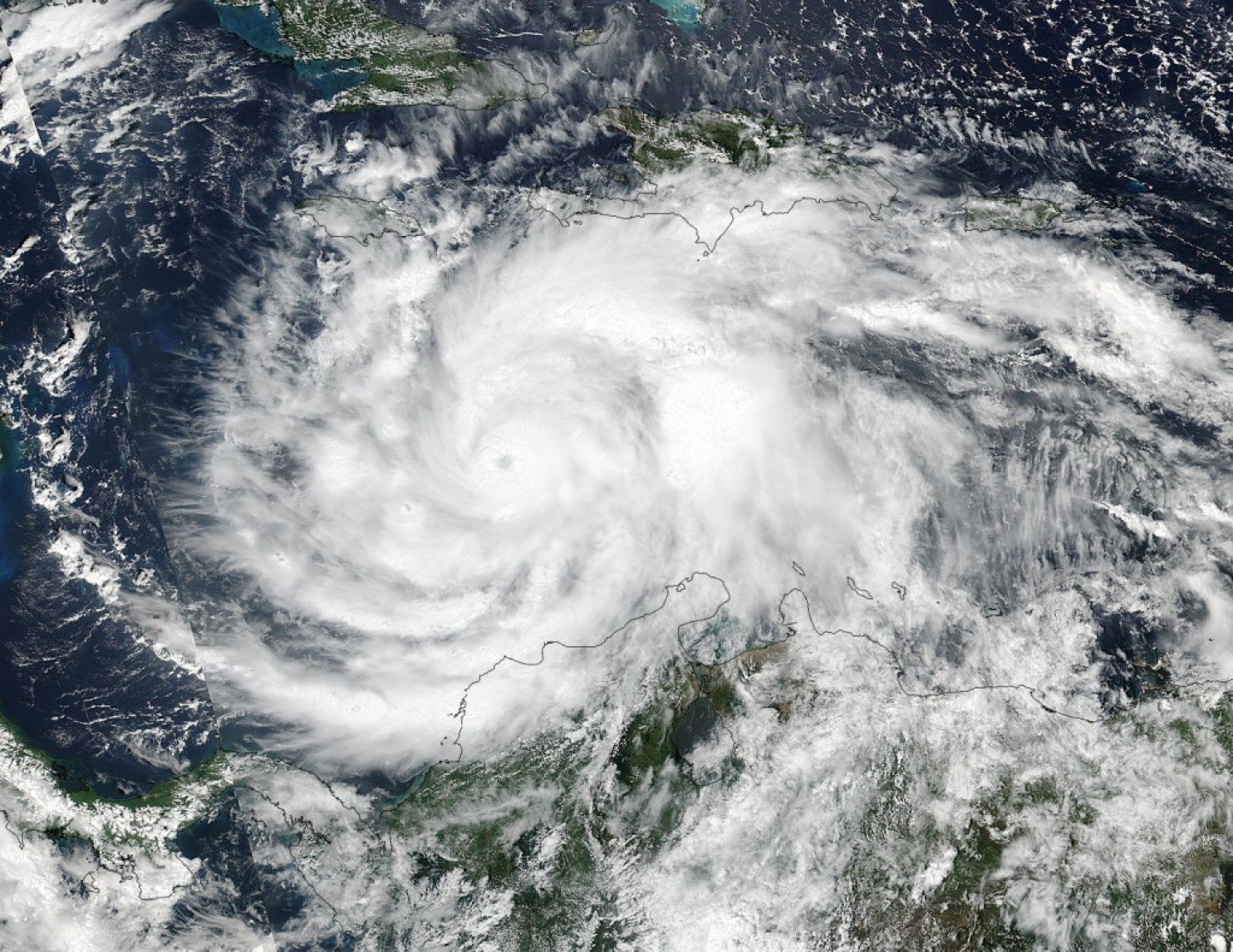On Sept. 28, Matthew developed from an area of low pressure as it approached the Windward Islands. It was a very fast-moving system early in its formation, and it steered rapidly westward by high pressure to its north. In the first few days of its life, that speed inhibited intensification, but as soon as it slowed, Matthew began to strengthen.
Matthew reached hurricane intensity Sept. 29, and since then has been breaking records. Below are some of the milestones that Matthew has achieved so far:
- Hurricane Matthew underwent a remarkable rapid intensification of 80 mph in 24 hours, intensifying from a Category 1 hurricane to a Category 5 hurricane. This was the third-strongest rapid intensification in a 24-hour period for any Atlantic hurricane on record, trailing only Hurricane Wilma (2005) and Hurricane Felix (2007).
- It also became the first Atlantic-basin Category 5 hurricane since Felix (2007). Matthew is the 31st Atlantic-basin Category 5 hurricane on record.
Comment: At the same time as the "remarkable rapid intensification" sprites and lightning were captured above the hurricane.
One of the remarkable things about Matthew during its time in the eastern Caribbean (<=20°N, 75-60°W) was its very slow forward speed. Typically, hurricanes have to move at least 8 to 10 mph to not churn up cold water, which would significantly weaken the storm. But the Caribbean is very warm and very deep, which means there was less cold water to churn. As such, Matthew has been able to sustain itself as a very strong hurricane for a long time. Because of its slow movement and strong intensity, it has achieved several notable records for intensity and duration.
- Hurricane Matthew is the longest-lived Category 4-5 hurricane in the eastern Caribbean on record.
- The storm was a Category 4-5 hurricane for 102 hours, which is the longest that a hurricane has maintained such a strength on record during October in the Atlantic basin.
- Matthew has been a major hurricane (Category 3-5) for more than five days, the longest-lived major hurricane since Hurricane Ivan (2004).
- Hurricane Matthew generated the most ACE of any hurricane in the eastern Caribbean on record.
- As of Wednesday morning, Matthew had generated the most ACE by any single Atlantic hurricane since Igor (2010). Given the forecast track and intensity of Matthew, it is likely to be one of the highest-generating ACE storms of the past 50 years.
- It was the first Category 4 hurricane to make landfall in Haiti since Hurricane Cleo (1964). Matthew was also only the third Category 4 hurricane to make landfall in Haiti on record, in addition to Flora (1963) and the aforementioned Cleo.
- Hurricane Matthew was the first Category 4 hurricane to make landfall in Cuba since Hurricane Ike (2008).
No hurricanes on record have made landfall north of Miami along the east coast of Florida in October, and as mentioned earlier, no major hurricanes have made landfall since Wilma in 2005. Each of these records has the potential to be broken in the next few days.




wasn't until the late 50's they started flying a few planes around hurricanes, and well into the 60's before satellites were much use. Tracking of intensification, length, strength therefore wasn't happening, so in all we have at best 50 years of reliable hurricane data.